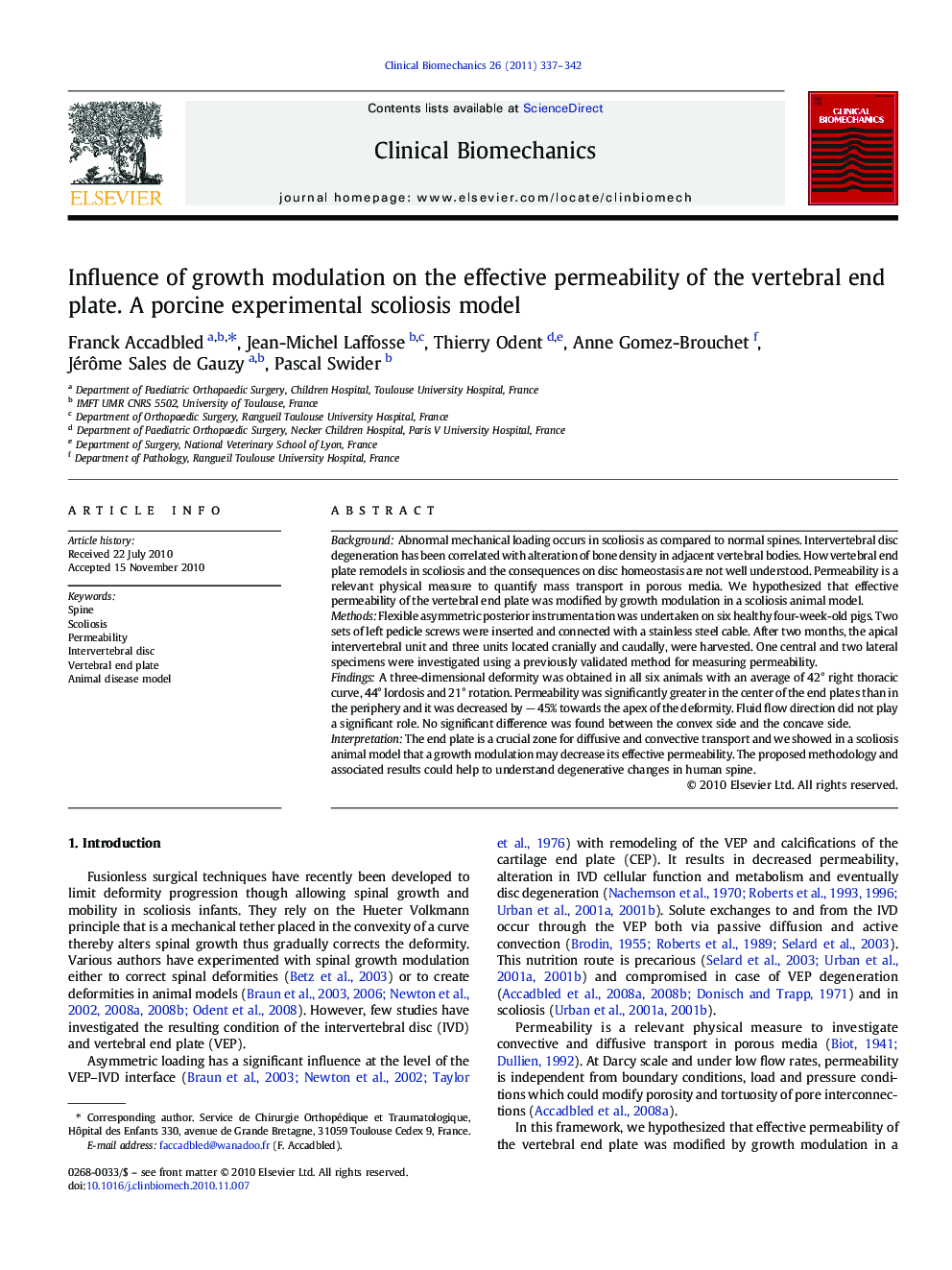| Article ID | Journal | Published Year | Pages | File Type |
|---|---|---|---|---|
| 4050818 | Clinical Biomechanics | 2011 | 6 Pages |
BackgroundAbnormal mechanical loading occurs in scoliosis as compared to normal spines. Intervertebral disc degeneration has been correlated with alteration of bone density in adjacent vertebral bodies. How vertebral end plate remodels in scoliosis and the consequences on disc homeostasis are not well understood. Permeability is a relevant physical measure to quantify mass transport in porous media. We hypothesized that effective permeability of the vertebral end plate was modified by growth modulation in a scoliosis animal model.MethodsFlexible asymmetric posterior instrumentation was undertaken on six healthy four-week-old pigs. Two sets of left pedicle screws were inserted and connected with a stainless steel cable. After two months, the apical intervertebral unit and three units located cranially and caudally, were harvested. One central and two lateral specimens were investigated using a previously validated method for measuring permeability.FindingsA three-dimensional deformity was obtained in all six animals with an average of 42° right thoracic curve, 44° lordosis and 21° rotation. Permeability was significantly greater in the center of the end plates than in the periphery and it was decreased by − 45% towards the apex of the deformity. Fluid flow direction did not play a significant role. No significant difference was found between the convex side and the concave side.InterpretationThe end plate is a crucial zone for diffusive and convective transport and we showed in a scoliosis animal model that a growth modulation may decrease its effective permeability. The proposed methodology and associated results could help to understand degenerative changes in human spine.
